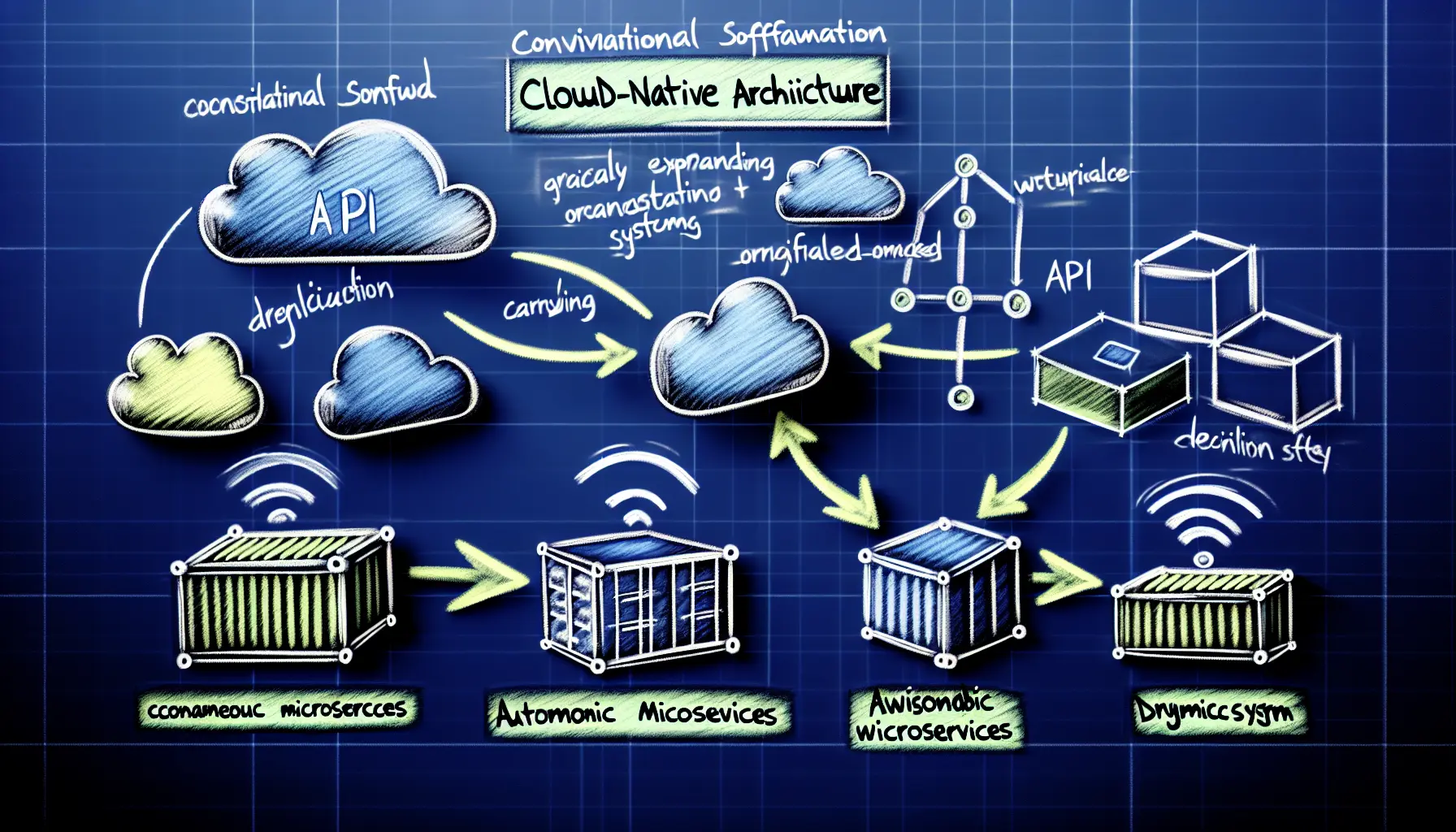
Estimated reading time: 10 minutes
Key Takeaways
- Scalability and Resilience: Cloud-native architecture enables scalable, resilient applications that adapt to changing demands.
- Microservices and Containers: Microservices and containerization are fundamental components of cloud-native systems.
- Continuous Deployment: Cloud-native principles allow for automatic scaling and continuous deployment without service interruptions.
- Essential Tools: Tools like Kubernetes and Prometheus are key for orchestrating and monitoring cloud-native applications.
- Future-Proofing: Embracing cloud-native practices positions organizations for future technological advancements.
Table of Contents
- Introduction
- The Essence of Cloud-Native Architecture
- Core Components That Define Cloud-Native Systems
- Building Scalable Systems with Cloud-Native Principles
- Essential Tools for Cloud-Native Development
- Real-World Success Stories
- Practical Implementation Steps
- Looking Forward: The Future of Cloud-Native
- Conclusion
- Frequently Asked Questions
Introduction
Cloud-native architecture revolutionizes how organizations build and deploy applications in cloud environments. This approach enables businesses to create applications that scale automatically, recover from failures independently, and deploy updates continuously without service interruptions.
The Essence of Cloud-Native Architecture
Cloud-native architecture represents a fundamental shift in application design philosophy. Unlike traditional applications that run on fixed infrastructure, cloud-native applications operate in dynamic environments where resources can expand or contract based on demand.
At its core, this architectural style breaks down applications into independent microservices. Each service handles specific business functions and can be updated, scaled, or replaced without affecting other components. This modularity creates resilient systems that adapt quickly to changing business needs.
For more insights, read about Cloud-Native Architecture.
Core Components That Define Cloud-Native Systems
Microservices Architecture
Modern cloud-native applications split functionality into small, independent services. Each service:
- Operates independently
- Maintains its own data storage
- Communicates through well-defined APIs
- Can be deployed and scaled separately
Container Technology
Containers package applications with all dependencies, ensuring consistent behavior across environments. This standardization:
- Eliminates “it works on my machine” problems
- Speeds up deployment processes
- Makes applications portable across different cloud providers
Explore more at Exploring Cloud-Native Architecture.
Building Scalable Systems with Cloud-Native Principles
Scalability stands as a primary advantage of cloud-native architecture. Systems can:
- Add resources instantly during traffic spikes
- Scale down during quiet periods to save costs
- Handle growth without architectural changes
Consider an e-commerce platform during Black Friday sales. Cloud-native architecture allows the system to:
- Multiply server capacity within minutes
- Process more transactions without performance degradation
- Return to normal capacity once the rush ends
Learn more about cloud-native applications here.
Essential Tools for Cloud-Native Development
Container Orchestration
Kubernetes leads the container orchestration space by:
- Automating container deployment and scaling
- Managing container health and replacement
- Handling network traffic distribution
Monitoring and Observability
Tools like Prometheus provide:
- Real-time performance metrics
- Automated alert systems
- Detailed system health information
For an AI guide, visit Artificial Intelligence Explained Guide.
Discover more at Cloud-Native App Development.
Real-World Success Stories
Financial institutions have transformed their operations through cloud-native architecture:
- A major bank reduced deployment time from weeks to hours
- Trading platforms achieved microsecond-level response times
- Insurance companies automated claims processing at scale
Read more at What Is Cloud-Native Architecture?
Practical Implementation Steps
Organizations succeeding with cloud-native architecture typically:
- Start small with non-critical applications
- Train teams on new tools and practices (Comprehensive Web Tutorials)
- Gradually migrate existing systems
- Monitor and optimize continuously
Looking Forward: The Future of Cloud-Native
The cloud-native landscape continues to evolve with:
- Serverless computing gaining prominence
- AI-powered operations becoming standard (Artificial Intelligence Guide)
- Enhanced security features built into platforms (Cybersecurity Threats 2025 Strategies)
Organizations embracing these changes position themselves for:
- Faster innovation cycles
- Better resource utilization
- Improved competitive advantage
Conclusion
Ready to transform your application architecture? Start by identifying a small, suitable project for cloud-native implementation. Share your experiences or questions in the comments below.
Frequently Asked Questions
What is cloud-native architecture?
Cloud-native architecture is an approach to building and running applications that exploit the advantages of cloud computing delivery model. It involves breaking applications into microservices and running them in containers for scalability and resilience.
How do microservices contribute to cloud-native systems?
Microservices split applications into small, independent services that can be developed, deployed, and scaled individually, enhancing agility and scalability in cloud-native systems.
Why are containers important in cloud-native development?
Containers allow developers to package applications with their dependencies, ensuring consistency across different environments and facilitating scalable deployment.
What tools are essential for cloud-native development?
Essential tools include Kubernetes for container orchestration and Prometheus for monitoring and observability, among others that support scalable and resilient architectures.
How can organizations implement cloud-native architecture?
Organizations can start by training teams on new tools, starting with small projects, gradually migrating systems, and continuously monitoring and optimizing their applications.









